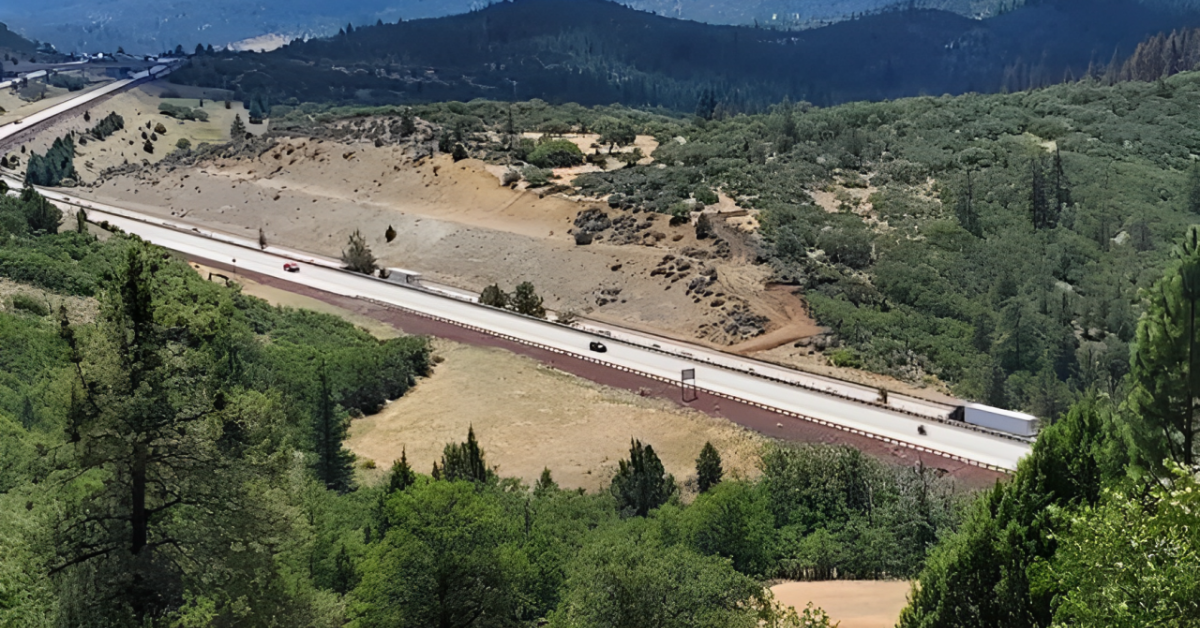Oregon is set to make its roads safer and protect its wildlife with an exciting new project. The state recently received a $33 million federal grant to build its very first wildlife overpass over Interstate 5. This new structure is designed to help reduce the number of accidents that occur when vehicles collide with wild animals—a problem that has been growing over time.
Every year, the Oregon Department of Transportation (ODOT) has to remove around 6,000 deer carcasses from the roads. This number shows just how serious the issue of wildlife collisions has become.
The planned wildlife overpass will be built just north of the Oregon-California border, within a special area known as the Mariposa Reserve in the Cascade-Siskiyou National Monument. This area is famous for protecting the rare Mariposa Lily, but it is also home to many wild animals such as deer, bears, elk, and cougars. With such a rich variety of wildlife, it is no wonder that the region has seen many incidents of animals being hit by cars.
ODOT spokesperson Julie Denney has noted that the area has a high number of wildlife-vehicle collisions. She explained that the Cascade-Siskiyou National Monument is known for its extremely high biodiversity. Along with the larger animals like deer and elk, the area also supports unique species such as rare butterflies, the Pacific marten, and the Pacific fisher.
The diversity in this region is not just a natural treasure—it also poses challenges for road safety. By building an overpass, ODOT hopes to offer a safe crossing for the animals, allowing them to move between different parts of their habitat without coming into dangerous contact with busy traffic.
The cost of accidents involving wildlife is quite high. On average, a collision with a deer can cost about $9,000, and a collision with an elk can cost around $24,000. These figures do not only represent the financial burden on the state and drivers but also highlight the need for a long-term solution.
In the past, Oregon has installed six wildlife undercrossings, which have already led to an impressive 86% drop in collisions. This success story has given officials confidence that the new overpass will have a similar positive impact.
Wildlife experts and local community members are excited about the benefits that this overpass will bring. Pepper Trail, an ornithologist and a member of the Southern Oregon Wildlife Crossing Coalition (SOWCC), explained that there is a huge need for animals to move freely.
Many species need to travel from their winter to summer ranges in search of food, mates, and safe habitats. The overpass will allow them to do this without the danger of being struck by vehicles. This free movement is essential not only for the survival of the species but also for maintaining healthy and balanced ecosystems.
The project is not just about protecting animals; it is also about enhancing driver safety. When animals unexpectedly cross busy highways, it can lead to dangerous situations for motorists. By providing a dedicated route for wildlife, the overpass will reduce these risks, making the highways safer for everyone. In addition, preserving the natural movement of animals helps protect the environment in several important ways.
Healthy wildlife populations contribute to stable and diverse ecosystems, which in turn help to maintain clean air and water, fertile soil, and even assist with carbon sequestration. All these factors play a crucial role in regulating the climate and can lead to real economic benefits for the community.
Another important aspect of the project is the collaboration between various organizations. ODOT will work closely with the Southern Oregon Wildlife Crossing Coalition and Southern Oregon University. Together, they will monitor wildlife movements during the construction and after the overpass is completed.
This collaboration will help ensure that the structure meets its goals and can be adjusted if necessary based on what the monitoring shows. Starting in 2028, as construction begins, all eyes will be on this innovative project to see how well it serves both people and wildlife.
The significance of the wildlife overpass extends far beyond just reducing accidents. It represents a forward-thinking approach to road construction and wildlife conservation. By investing in a solution that benefits both humans and animals, Oregon is setting an example for other states facing similar challenges.
The project is a reminder that protecting nature and ensuring public safety can go hand in hand. It shows that with careful planning and collaboration, it is possible to create infrastructure that respects the natural world while also serving the needs of a growing population.
As the project moves forward, residents and environmentalists alike are keeping a close watch. Many people in the region have expressed support for the initiative, seeing it as a necessary step to balance the demands of modern transportation with the need to protect wildlife.
The overpass is expected to serve as a model for future projects in other parts of the country, where wildlife-vehicle collisions remain a significant concern. With the combined efforts of government agencies, environmental groups, and academic institutions, the hope is that similar structures can be developed elsewhere, leading to safer roads and healthier ecosystems nationwide.
In summary, the $33 million wildlife overpass project in Oregon is a groundbreaking step in addressing the serious issue of animal collisions on busy highways. It aims to provide a safe passage for a wide range of wildlife while significantly reducing the cost and danger of vehicle collisions.
The initiative highlights the importance of preserving biodiversity, enhancing road safety, and promoting environmental sustainability. As the project begins construction in 2028, it stands as a promising example of how careful planning and cooperation can lead to innovative solutions that benefit both nature and people.
Disclaimer: This article has been meticulously fact-checked by our team to ensure accuracy and uphold transparency. We strive to deliver trustworthy and dependable content to our readers.

